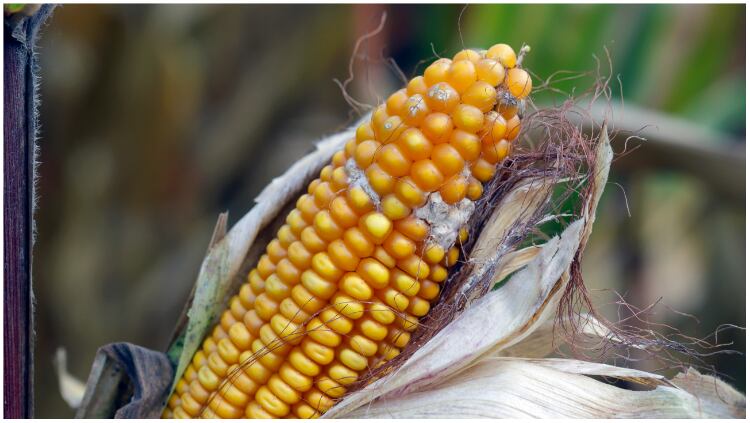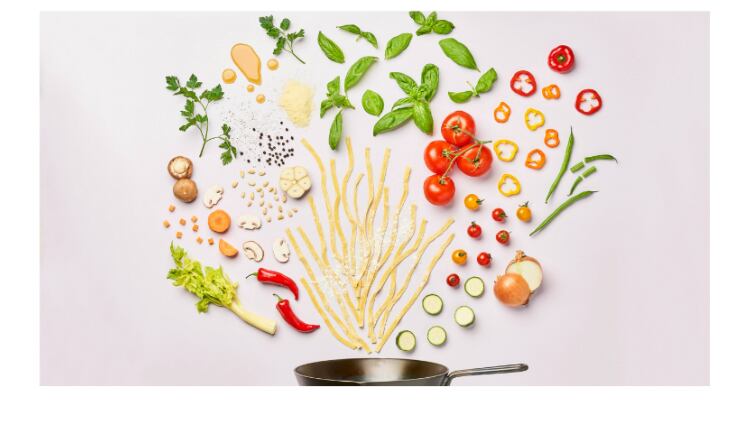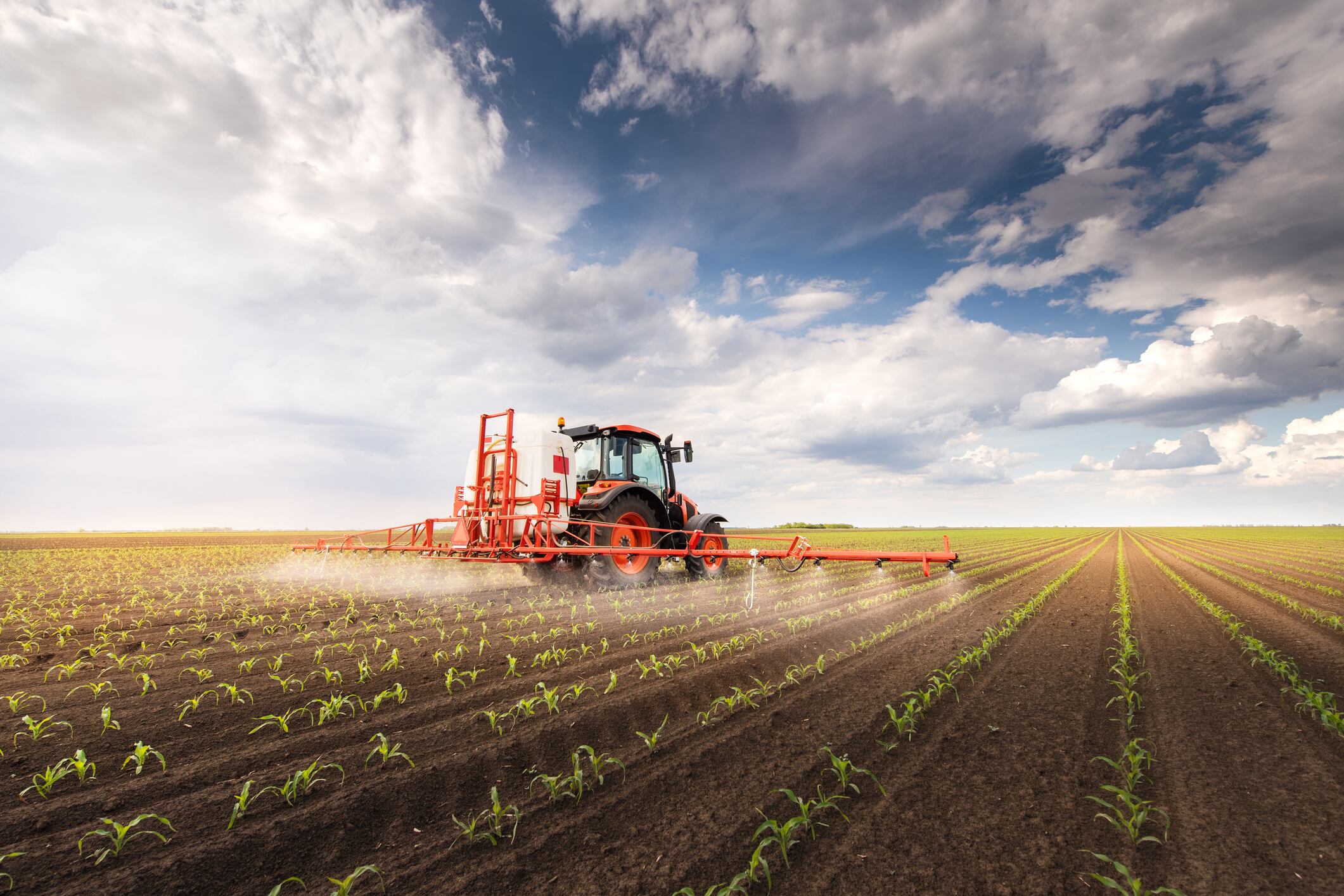Rising costs
Food prices around the world have risen by as much as 65% since the beginning of the pandemic, with this year seeing a 12% increase following Russia’s invasion on Ukraine, making for record-breaking inflation levels.
Since 2022, it’s felt like the world has been trapped between falling dominos, as one shock led to another. The impact, as we all know, has been higher energy bills, spikes in fertiliser prices and fuel, along with increased food insecurity as Europe’s breadbasket became unavailable.
The pressure, which we had all hoped would alleviate after lockdowns lifted, has only gotten worse on our industry.
To offer a bit of perspective, the IFM calculates a 1% increase in fertiliser prices equating to a 0.45% rise in food prices, whilst a 1% climb in oil prices sees a 0.2% rise in food prices.
A move to local suppliers
Speaking with Sian Holt, MD of Fudge Kitchen, Food Manufacture learnt about the ingredients challenges this well-known artisan producer experienced and how it’ll be moving forwards in 2023.
“At Fudge Kitchen we have made a concerted effort in the last year to review the ingredients we use. Our business is built on three pillars - people, the planet, and the products we make; and as part of our commitment to these pillars, it’s important that the ingredients we use are being produced ethically and to the high standard expected for our artisan confectionery,” Holt explained.
“In March 2022 we switched our chocolate supplier to Luker Chocolate – a Colombian supplier known for its sustainable community initiatives, transparency across the entire supply chain and the superior cocoa it produces.
“It was a big decision for us to change the chocolate we use. We wanted more transparency from our supplier, but we didn’t want to compromise on the quality and taste that we pride ourselves on. Being an artisan confectioner and supplying to many luxury department stores and hoteliers, it was vital that we maintained our superior taste.
“The biggest challenge we’ve faced in recent times is the rise in costs across the board, from ingredients and packaging to energy used. Our core ingredients like sugar and cream have increased by around 5% in the last year. As a knock-on effect, we have in turn had to increase our own prices to reflect this.
“Going into 2023 we’ll be continuing to use ingredients produced in the UK where we can, having phased out internationally grown cane sugar in favour of beet sugar grown in Norfolk earlier this year. Our six high-street shops around the country also use regional and locally produced ingredients where possible and are continuing to build strong relationships with local suppliers.”
Food prices: What can we expect next?
Rising food prices were predicted to peak at 14-16% in August 2022, before slowing by mid-2023 by IDG. But supply chain fragmentation and labour shortages changed its trajectory. In a revised forecast, IDG has revealed a higher peak at 17-19% and a slower dissipation period over the course of 2023. However, headwinds remain as we enter the new year.
In its report entitled ‘How bad is the economic storm?’ most of the impacts on food and drink appear to be on hospitality, with IDG’s data indicating many will be looking to reduce their spend on eating out. A reduction in how much is consumed is also on the cards, but it’s more likely that we’ll see less money spent in supermarkets – most likely through a combination of eating less and picking cheaper brands.
As a recession looms however, Reuters reports certain commodities could see falling price tags – but that doesn’t mean they’ll become affordable. Moreover, gentler weather conditions will mean ingredients such as coffee and sugar should see a surplus in produce.
“Our research finds that people are more budget conscious – with 96% of European consumers now tracking their grocery spending,” Soumya Nair, Global Consumer Research and Insights Director at Kerry told Food Manufacture. “That said, consumers’ innate desire for exploration through food has stuck and will continue – so it isn’t just about the cheapest price. People are craving more convenient, better value and faster options which deliver excitement. Think taste without compromise and multi-sensorial attributes to heighten product experiences and edible escapism.”
Climate change
We don’t have long left to prevent unspeakable and irreversible impacts to Earth as a result of changing weather conditions.
And although benign weather conditions are predicted to ease the burden on farmers, we can confidently say that climate change will continue to cause havoc.
Suffering soil
According to reports, half of the topsoil on the planet (needed to grow food) has been lost in the last 150 years.
The consequence of soil erosion doesn’t just mean a loss of fertile land but it can also lead to pollution and sedimentation in streams and rivers, the WWF warns. If these waterways become clogged, it can have damaging impacts on wildlife, such as a decline in fish. Degraded lands are also less capable to hold water, which means flooding can be exacerbated.
Mycotoxins more likely
The changing conditions are also anticipated to impact mycotoxin levels in animal feed and products. As Cargill explains in its World Mycotoxins 2021 report: “Since mycotoxins are produced by molds as a natural defense response to environmental factors, their occurrence is linked to climate conditions. As a result, changing weather patterns can lead to substantial changes in mycotoxin distribution, frequency and spread. In a changing climate, mycotoxins will contaminate new geographical areas and crops, and we expect this trend to continue, and possibly even accelerate, over the next five years.”
Offering an update on the report, Clement Soulet, anti-mycotoxin agents category lead of Cargill’s animal nutrition business told Food Manufacture that she saw three noteworthy data trends in 2022:
- The ‘Big Four’
- Increased number of positive analyses above detection limits
- Mycotoxin co-occurrence in analyses.
“In line with the previous year, 2022 data shows that Vomitoxin (DON) (81% positive samples), Zearalenone (ZEN) (79%), Fumonisin (FUM) (74%), and Aflatoxin (AFL) (70%) continue to be the top four mycotoxins occurring worldwide. Ochratoxin (OTA) (60%) and T2 toxin (64%) show the lowest contamination rates, though both have increased from 2021 to reach above 60% contamination occurrence.
“In 2022, 75% of analyses were contaminated above detection limits with at least one mycotoxin. From 2021, we observe a 3% increase in positive analyses. The largest prevalence increases include ZEN (+8%), T2 (+7%), and AFL (+6%).

“This year, we identified that 75% of analyses were contaminated with at least one mycotoxin, Increasing mycotoxin co-occurrence requires a strategic mitigation plan to address multiple contamination risks.”
Cargill has observed a slight increase in mycotoxin levels over the last year and expect this to continue.
“From 2021, analyses above our performance risk thresholds increased 4%,” continued Soulet. “The largest performance risk increases include ZEN (+12%), T2 (+8%), and AFL (+3%). DON and FUM remains at high levels. This increase is likely due to several factors including seasonal weather variation, improved technology that enhances contamination detection abilities, increased byproduct and alternative ingredient use, and changes in agricultural practices such as crop rotation, less tillage and lower fungicide usage.”
On a positive note, several strategies to keep mycotoxins at bay are in development, such as detoxification methods (e.g. using cold atmospheric plasma), magnetic materials and nanoparticles), as well as gene-editing tactics.
Adding to Soulet’s comments, Ruth Kimmelshue, leader of Cargill’s animal nutrition and health enterprise said: “We need to evolve globally supply chains beyond a just-in-time approach. Modernising infrastructure, innovation and greater efficiency will be critical to preventing disruption in the future. Climate change affects where and how crops are grown. In any given year, for example, we can see improved yields in South America and decreased yields in North America or Europe, or vice versa. As an industry, we need to embrace this reality and adjust our supply chains to respond to the ever-changing environment.
“The world needs governments, NGOs and the private sector to work together and stand united in our commitment to keeping agricultural markets open and moving food to where it’s needed. We learned during the pandemic that the food system is resilient because the people who show up every day to grow, move and manufacture our food are incredibly resilient. We owe them our thanks. But we can’t let our guard down because the events of the last several years have proven that: 1) we need to expect the unexpected; 2) get comfortable with change and volatility; and 3) recognise and reinforce resilience across our food system.”
Sustainable ingredients will rule…
With climate change on everyone’s minds, we’re likely to see manufacturers looking to ingredients which boast sustainable qualities.
Ingredient giant Kerry, states that 49% of consumers consider sustainability when making purchases. Moreover, according to consumer insights company WGSN, there is increasing social (i.e. digital) engagement around the terms ‘climate’ and ‘ingredient’.
Across the world, we consume around 150 plant species - of those just 12 provide three-quarters of the world’s food. Just tree crops (maize, rice, and wheat) make up more than half of the calories and proteins that we derive from plants. Whilst we eat around five animal species. The problem is that an overreliance on just a few species – be that plant or animal – means our food system is less resilient to threats, including pests and climate change.
In 2019, Knorr and WWF partnered up to bring us its 50 future foods, from algae to cacti and fruit vegetables such as pumpkin seeds.
A more recent report from WGSN has highlighted five ingredients which it believes hold the “greatest opportunity for future development”, this are as follows:
- Amarnth
- Bambara buts
- Fonio
- Lupin beans
- Moringa.

While Food tech startup, ChickP, says it sees potential in chickpeas. Commenting on the launch of its chickpea protein isolate for plant-based ice cream, the company said it was driven by both food sensitivity (such as allergies and intolerance) as well as the continuing trend for reduced animal-based consumption.
According to recent research by The Smart Protein project in Europe, flexitarians are driving the plant-based food sector. As many as 36% of flexitarians stated they intend to consume more plant-based dairy products, and more than 30% of flexitarians eat plant-based ice-cream or sorbet at least 1-3 times per month. At the same time, the chickpea legume is becoming more and more popular. Over 40% of flexitarians noted they would like to see chickpeas as the main ingredient in plant-based foods.
…but be beware of greenwashing
Whilst ingredients can be sustainable for their attributes such as amarnth’s robustness to temperature or bambara but’s ability to improve soil fertility, sustainable foods are also those that have been cultivated, packaged and transported responsibly. Companies will need to be mindful of all these things, ensuring that they are considering sustainability from every side.
This year we’ll also see an influx of eco labels, as companies begin to realise the importance of transparency. But it’s not just about putting the information out there, it’s also about being able to back it up. Consumers are becoming savvier and greenwashers will be spotted more easily in the coming years, as these eco labels serve as reliable proof of a brand’s sustainable footprint…well, so long as a harmonious methodology can be achieved!
Precision fermentation
Precision fermentation seems to have been more commonplace among our headlines, with a number of big named brands investing. According to Markets and Markets, the market is likely to reach $36.3bn by 2030.
Fermentation is not a new technique but the way in which we use it has been adapted. Food safety expert and MD of FOCOS, Bert Popping, described the process of precision fermentation succinctly to us: “Precision fermentation, also sometimes referred to as cellular agriculture, is a technique where a microorganism (which may be a strain of bacteria, fungi, yeast or even algae) is modified to produce the desired protein (or metabolite) in large quantities. This could be an animal protein, e.g. a meat protein. Another area of application is the production of cultured cells (e.g. bovine muscle cells) to produce cultured meat.”
But as with any novel technology, precision fermentation comes with challenges and opportunities.
“Many tissue-cultured cells need to grow in a medium, which, to date, is still often Fetal Bovine Serum (FBS, also referred to as FCS – Fetal Calf Serum),” Popping said. “FBS (or FCS) has batch-to-batch variability, is expensive and in the past there have been shortages. Its use is accompanied by ethical concerns. The good news is that researchers have and are developing suitable, non-animal-based alternatives. Many can be found in the FCS-free Database.
“Another challenge is that often it is desired that the fermentation product has a structure. For this you need to add so-called scaffolds, on which the structure (e.g. muscle tissue) can be built. And the materials used as scaffolds need to be suitable for consumption – or need to be extracted after the fermentation is completed. Choosing the right scaffolding material is more an art than a science at present.
“But beyond the challenges associated with fermentation itself, there are challenges of consumer acceptance and regulatory challenges too. Research into consumer acceptance showed that consumers see the most common benefits of cultured meat in the facts that for the production of cultured meat no animals need to be slaughtered and a possible positive impact on the environment, e.g. reduced greenhouse gases. On the other hand, some are concerned about the novel technologies used, including genetic engineering. Here, studies show the same trends as for the acceptance of GMOs: a higher acceptance of males vs females, and younger consumers vs older consumers, as well as a higher acceptance of those with a higher degree of education. Consumer concerns raised varied widely: concerns about food safety (the chemicals and ingredients the cultured meat contained, possible long-term side effects), unnaturalness, concerns about taste and appeal, as well as the price. While taste and price can be adapted, food safety concerns can be difficult to address. The latter may be a barrier to the willingness to try cultured meat. It is therefore important to address food safety at a very early stage and adapt communication to the varying literacy skills of the target audiences.
“Another challenge is regulatory approval. If the cells are genetically modified to produce the target protein (or compound), regulatory approvals are required. And the regulatory frameworks of such novel foods differ substantially between the jurisdictions. In Europe, such products would currently be regulated under the novel foods regulation ((EU) 2015/2283). If, at a later stage, gene-edited cells will be regulated differently, in line with the de-regulation of such technologies in many countries, remains to be seen. In the US, the Food and Drug Administration (US-FDA) as well as the United States Department of Agriculture (USDA) will be involved in the consultations and the assessment of the products.”
He concluded: “Most of the technical and regulatory challenges – as the past has shown – can be overcome. The most difficult challenge is to ensure consumer acceptance and address food safety concerns. And here, lessons from the past can for sure be learned and turned into an opportunity for the industry.”





